Editing ‘The Killer’ So That ‘We Crawl Into His Ears and Sit in the Back of His Eye Sockets’

- Oops!Something went wrong.Please try again later.
- Oops!Something went wrong.Please try again later.
[Editor’s note: The following interview contains spoilers.]
David Fincher’s “The Killer” is his most experimental film since “Fight Club”: a subjective, cinematic tour de force in which we get inside the mind of Michael Fassbender’s titular assassin after he experiences his first misfire in Paris. Fully exposed for the first time, the hunter becomes the hunted and he’s forced to cover his tracks while stepping outside of his comfort zone. In the process, the film becomes a noirish existential journey from nihilism to faith, which is what first attracted Fincher to adapting Alex Nolent’s graphic novel.
More from IndieWire
'Still: A Michael J. Fox Movie' Sweeps the Critics Choice Documentary Awards (Complete Winners List)
For go-to editor Kirk Baxter (the Oscar-winning “The Girl with the Dragon Tattoo” and “The Social Network”), it was one of the hardest Fincher films to cut. It’s divided into six chapters, each with its own look, rhythm, and pace tied to Fassbender’s level of control and uncertainty, and the editorial process necessitated the creation of a visual and aural language to convey subjective and objective points of view for tracking Fassbender. In fact, it’s reminiscent of what Hitchcock called “pure cinema,” only much bolder.
This involved a voiceover mantra (“Stick to the plan,” “Anticipate, don’t improvise,” “Empathy is weakness, weakness is vulnerability”); a play mix of The Smiths to keep him focused (melodic nihilism); an innovative sound design/mix by Ren Klyce that’s like attaching a mic to the camera to capture 360-degree immersion; and a typically uncanny score by Atticus Ross and Trent Reznor that alternates between lower register guttural sounds and upper register choir vocals to help convey Fassbender’s state of mind.
“It was like a ’70s film and I found it to be one of the more challenging movies to make because it’s not sort of juggling a bunch of different character lines or going back and forth from past to present and that sort of thing,” Baxter told IndieWire. “It’s just a straight line, but the exposure of that with nowhere to hide, like you can’t kind of jazz hands your way out of something. It’s like everything is just under the spotlight and you’re not having dialogue and interaction to kind of dictate your pace. It’s a series of shots and everything has to be manhandled and manipulated in order to give it propulsion, or how you slow it down. But just by its very nature, it had to be sort of let’s go [and see how much Fassbender has to break his own rules to survive].”
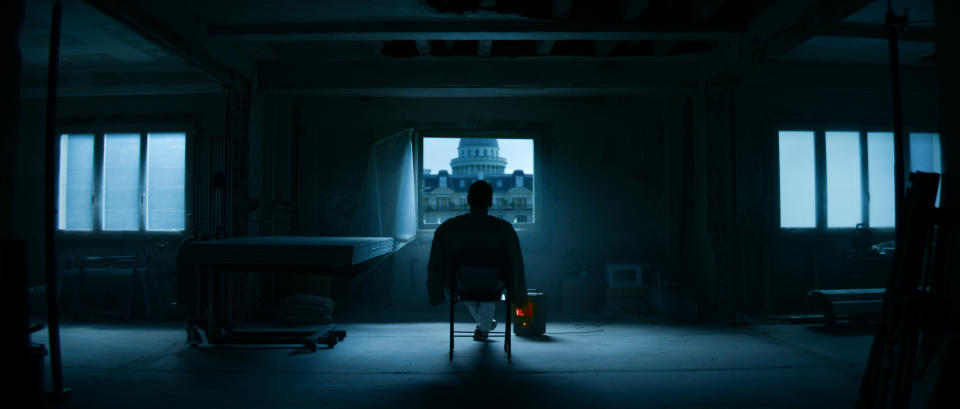
Paris: The Target
Paris serves as a microcosm in terms of pace, style, and point of view. It introduces us to The Killer in a very precise way, revealing his professional habits, meticulous planning, and internal monologue during the stakeout in a “Rear Window” type setting. Everything that day is ruled by the mid-shot and captured by Oscar-winning cinematographer Erik Messerschmidt (in Super 35 with the 8K Red V-Raptor) with a steel blue sodium vapor quality. Meanwhile, the sounds of the city quietly surround Fassbender (including children in the street).
The Paris sequence also took the most time for Baxter to assemble because it was stitched together from different locations besides Paris (the interior of the under-construction WeWork space, where Fassbender waits, was built on a New Orleans stage, as was the inside of the Parisian apartment directly across, where the target appears).
“I could have enjoyed the discipline of the movie that is only the opening act,” Baxter said. “I love the whole power attack, the stretching of time, the patience of what it takes to do something properly. And I love that it’s grounded in the rule of physics and how practical it is that each detail in order to do something correctly deserves the same amount of attention.”
Along with establishing unconventional subjective/objective shots with little dialogue, Fincher wanted to do the same with the soundscape. “We crawl into his ears and sit in the back of his eye sockets instead of how it’s being presented,” added Baxter. “And from the moment when the target turns up, it was David’s idea to try a track that was what he plays in his headphones. And when you have his POV, we turn the track up to four, and when you’re back on him, the track drops down, and you get the perspective of it playing in his ear.
“And because this is also a scene that’s written with the introduction of the mantra, we’ve got a lot of voiceover. We had rules as to how we applied it physically in its space and we kept massaging, rewriting, experimenting. But we couldn’t have voiceover and music at the same time because there’s too much sonic noise pushing at you. So one’s got to occupy one space and one take the other. So the logic said to us what’s blaring in his ears and when he’s in a monologue is when we’re looking at him. That was the rule of what was subjective and what was objective.”
And then when Fassbender escapes, it’s the polar opposite of “Fast & Furious.” He quietly rides off on a motorbike and gets out of town, with the accompanying score counter-intuitively offering a soothing choir as part of his mantra. “It’s not high octane and it keeps the music in that quiet, methodical mind state.”
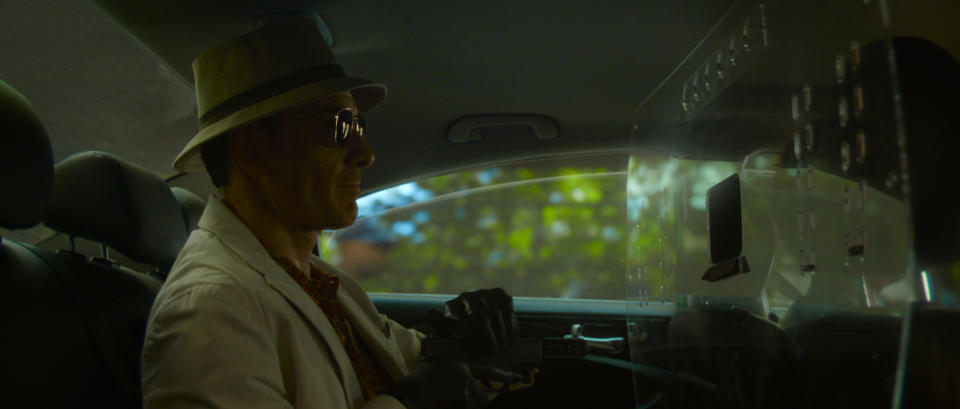
The Dominican Republic: The Hideout
When Fassbender arrives home in the Dominican Republic, he discovers that assassins attacked his girlfriend (Sophie Charlotte), who now lies in a hospital. The pace quickens with hand-held shots as he roams the empty house and surveys signs of bloody violence. But the subsequent hospital scene is remarkable for its tenderness and creepiness. The lights constantly flicker and you can hear screaming children as Fassbender sits by her side. He’s consoling but also stewing.
“So this was a lot of reducing it down to essential shots and then the hospital has this third-world vibe,” Baxter said. “It’s telegraphing a lot without having to talk about it. But it’s also things like those power outages and still pushing through with your story. They just give you wonderful cut points to move around. And the generator coming back on is like a growl from him, he almost sounds machine-like and turns up his head like the Terminator.”
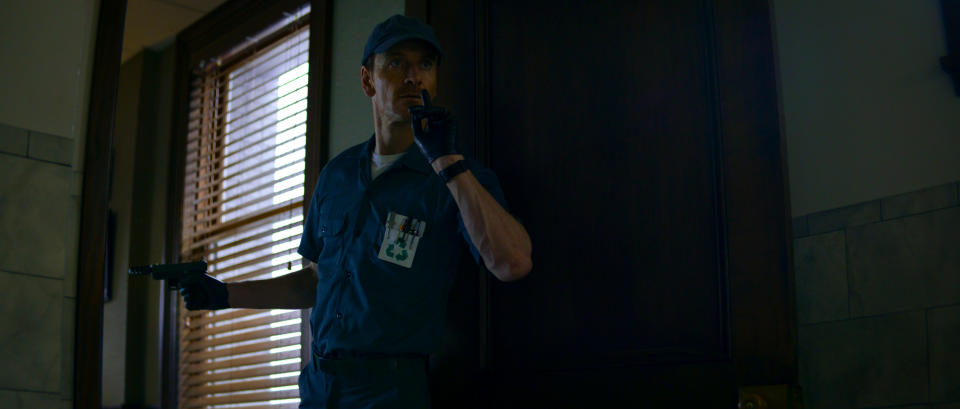
New Orleans: The Lawyer
Fassbender exacts revenge on his primary contact, a friend and lawyer (Charles Parnell) in his old haunt of New Orleans (the remainder of the film has split tones of orange and blue or orange and teal). The setup prep is slow as he cunningly enters the corridor and office dressed as a maintenance worker. The lawyer yabbers in protest and the bookkeeper (Kerry O’Malley) begs for mercy. But Fassbender brutally shoots him with a nail gun and makes the assistant provide the contact info of the client and subcontractors before painlessly dispatching her.
“It was one of the hardest things to put together,” Baxter said. “It’s a little like a Swiss watch in terms of how exacting it can be in his control. David had like 25 angles in the corridor, but when you put it all together, I love how that scene unfolds by playing both sides of the glass [between the office and corridor]. Typically, he’s gonna say as little as possible and his stillness controls the pace, and when he gets fed up, these little, tiny subtle looks from him are letting you know that’s enough and where this conversation stops.
“But, in the end, I made [the kill] as quick as possible because it is hard to endure. And then you build up to [the bookkeeper’s] moment and tying everything back to his mantra about empathy. We end on my favorite Smiths’ track, ‘Unhappy Birthday.'”
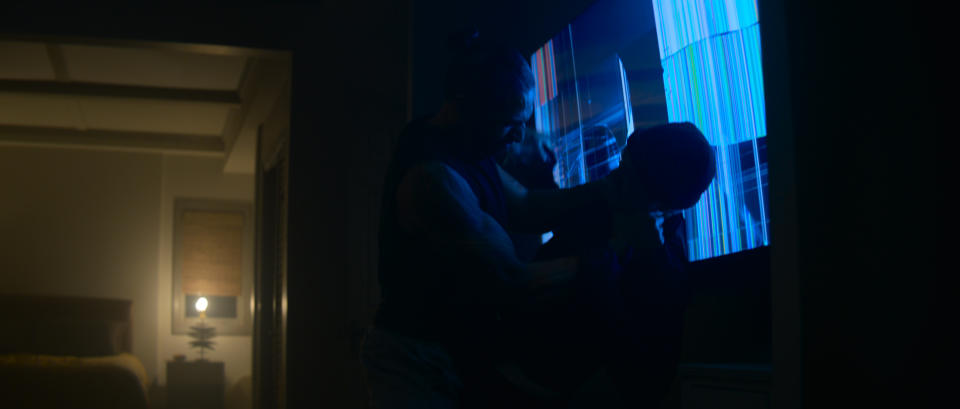
Florida: The Brute
The nighttime fight between Fassbender and The Brute (Sala Baker) at his Florida home is one of the best of the year. It’s like a contest between two warriors in the dark and is unusually quiet for fear of causing a disturbance. Fassbender sneaks into the house and gets attacked by the formidable killer who beat up his girlfriend. It starts out clunky and takes place in The Brute’s bong room (which Fassbender uses to great advantage). At first, he gets punched and knocked around and appears way overmatched (even getting knocked into a large screen TV). But he grows stronger and his hits are strategic, precise, and powerful.
“It makes everything seem harder and more practical and less sort of hiding in cinematic tropes,” said Baxter. “And the sound is raw. It’s just come, come, come, come, come, and I’m clipping it forward. It’s just moving a little bit faster, so it’s spilling and it’s something that’s slightly out of his control. But we’re building in these little pauses so that it’s not running away from the audience, with things like the cheese grater to give you a moment to go, ‘Oh, thank Christ.'”
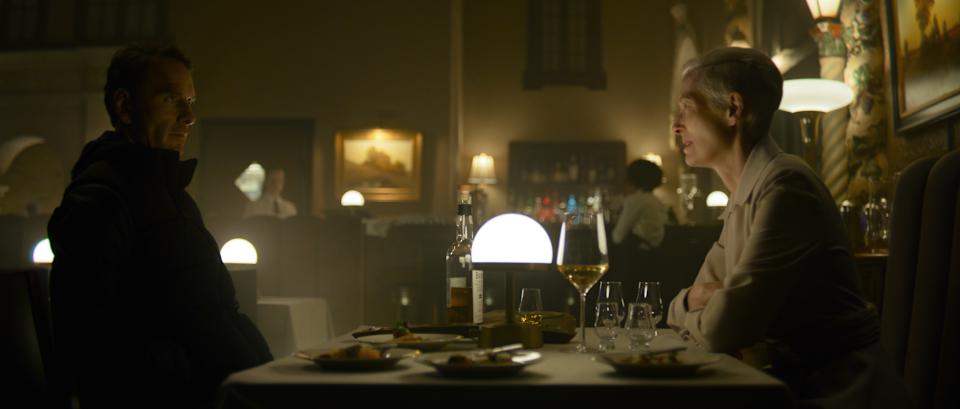
New York: The Expert
Then Fassbender tracks down the subcontractor (Tilda Swinton) who hired The Brute and accompanied him to the Dominican Republic. After missing his chance to shoot her at an empty intersection, Fassbender sits down next to her in a restaurant for what Baxter called “The Last Supper.” It’s a long, existential scene between these two samurai-like combatants, in which Swinton does all of the talking except for three choice lines by Fassbender. She tries to finesse her way out of the fatal situation by establishing control and getting inside his head. She even resorts to telling the violent joke about “The Hunter and the Bear” to explain that Fassbender’s not there for the kill. But when he’s had enough, he takes a drink from her whisky bottle and gets on to business: “Anticipate, don’t improvise.”
“It’s just a stare-down,” Baxter said. “He’s stoic, sort of saying, whatever you want, it’s not working, and she gets under his skin for a moment, and eventually he starts to give us little bits of info. Really, what she’s up to is trying to convince him that she should be set free and he’s not buying it. And then it settles into the reality that dawns on her that, ‘I’m stuck.’
“So, it’s more an exercise for me of how you make the best use of his reaction so that it’s not just staring bluntly but blankly for a really long period of time. He’s got to push the conversation along beyond just listening to her.”
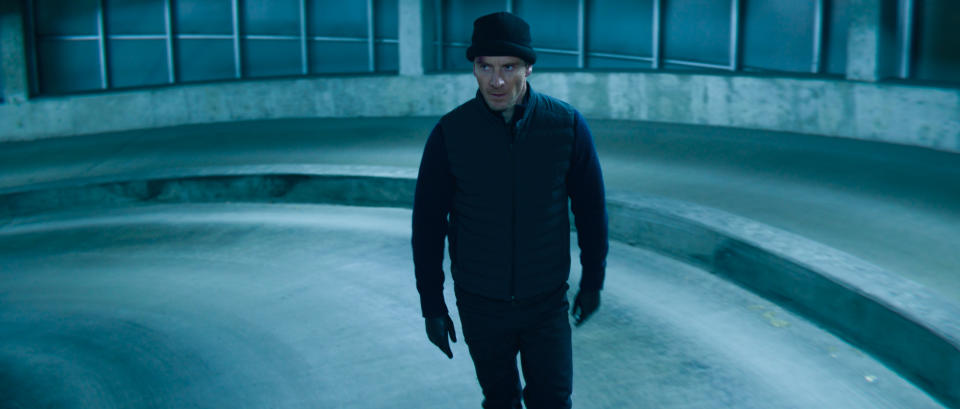
Chicago: The Client
In the final chapter, Fassbender tracks down the billionaire client (Arliss Howard), breaks into his penthouse, and sizes up the threat in a long dialogue scene in which The Killer steers the conversation. He wants to put the fear of excruciating death into him.
“So he’s just risk assessing, and that began as part of my intrigue in doing such streamlining. David’s take on a sort of genre film is that it’s not going to give you that backstory [of who The Client is and why he needed the hit]. It was fun to put all of [Howard’s] performance together because there was a thing that would quiver in his voice once the fear set in him.”
As for Fassbender, Baxter thought he was the perfect actor, both physically and emotionally, for a role that amounts to the anti-Bond. “Physically, he’s like an athlete, which is a great asset,” Baxter added. “He moves in an exacting way and can repeat it for all these different angles so you can really put something together as intended. The other thing is that it’s just so helpful when actors have the ability to be still and not wobble around through all their deliveries or close-ups, and to allow the stillness to have its own form of power and weight, and he does that in spades. He also exudes a vibration sort of danger that can explode at any moment into deathly action.”
“The Killer” is in limited theatrical release now. It streams on Netflix November 10.
Best of IndieWire
Where to Watch This Week's New Movies, from 'The Marvels' and 'Dream Scenario' to 'The Killer'
The Best Thrillers Streaming on Netflix in November, from 'Fair Play' to 'Emily the Criminal'
Sofia Coppola Movies, Ranked: 'Priscilla,' 'The Virgin Suicides,' 'Marie Antoinette,' and More
Sign up for Indiewire's Newsletter. For the latest news, follow us on Facebook, Twitter, and Instagram.

